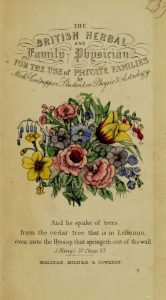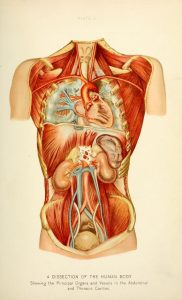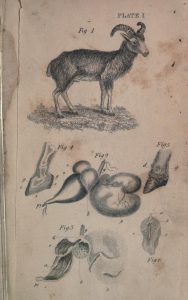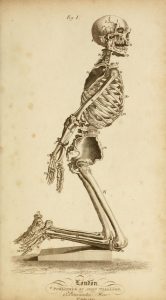Recently the MHL completed its first progress report for the National Endowment for the Humanities on work done during the first year of our serials digitization project. We’re going to be highlighting some of our finds here during the next couple of weeks.
Lets start with: Audiences
It is difficult to quantify the audience of an open and freely available resource with multiple access points. The MHL’s main audience was intended initially to be that of its participating institutions: academic historians and students in the history of medicine and science as well as health professionals interested in the past and future development of their specializations. However, its apparent audience is much broader. This may be in part an outcome of its active programs in social media (MHL maintains a blog, a Twitter account, and a Facebook page to publicize its work) and outreach (MHL sends selected announcements and a blog digest to related listservs and submits blog posts to hub sites specializing in history of medicine, science, digital and medical humanities).
Our audience analysis must rely on a variety of measures. The Internet Archive does not collect data on users, but on downloads. As a result, we do know that during the MHL’s content building period, 3/1/2010 to date, downloads have continued to increase, with more than 2.6 million copies of the MHL’s 47,000 objects downloaded; additional items may have been queried or viewed online. Downloads span esoteric texts from the 16th century, 18th and 19th century manuals of medical practice, anatomical atlases, broad selections of popular medicine from the 16th through the 20th century, natural history, homeopathy, and spiritualism; this breadth indicates that as the “medical humanities” expands as a discipline, traditional historians of medicine continue to be joined by academics in a wide range of fields (art history, literature, linguistics, etc.). It might also suggest that the audience of the MHL extends beyond academic researchers.
The MHL’s blog is a rich source of content on current history of medicine publications, events, and digital tools, including MHL-specific search, through which we hope to attract users to pass on the way to the collection in the Internet Archive. This investment is intended to help us learn more about our audiences, but the blog’s users will always be a sample of the total MHL user base. Google Analytics on the blog indicates an average of 1,600 unique visitors to the site monthly, with 72% of these being new. Users are primarily from the United States (82%), France (3%), and the United Kingdom (2.7%), reflecting the three main sources and languages of MHL content. Most traffic derived from a Google search, either for the MHL by name or for one of the numerous medical history topics covered on the blog. Other top sources of traffic are the United States National Library of Medicine, the Bibliothèque Interuniversitaire de Santé, and the Internet Archive.
The MHL Facebook page analytics offer some ideas about gender, age, and location of followers. MHL’s 410 followers are primarily 25 to 54 years of age, from the United States (321), Japan (64), Hungary (27), and the United Kingdom (23), evenly divided from a gender perspective, and tend to be highly engaged, reposting and commenting on MHL posts. They are linked to an additional 130,000 persons; as a result of this connectedness and engagement, for example, in May 2013 between 500 and 2,700 people saw an MHL post at least weekly.
Analysis of the MHL’s Twitter audience suggests alignment with our early thoughts on the nature of the Internet Archive’s downloading users. An informal census of MHL’s 495 followers taken on May 1, 2013 showed a variety of self-identified academic historians (111), students (78), arts and humanities institutions (157) and artists, digital humanists, journalists, health professionals, and the general public (131).
 In the nineteenth century, concern about alcoholism was widespread in the United States. The history of alcoholism — in America or elsewhere — has a much longer history, but the nineteenth century, with the explosion of cheap print materials and faster methods of communication, had generous possibilities for public discussion and sensationalism. Continue reading
In the nineteenth century, concern about alcoholism was widespread in the United States. The history of alcoholism — in America or elsewhere — has a much longer history, but the nineteenth century, with the explosion of cheap print materials and faster methods of communication, had generous possibilities for public discussion and sensationalism. Continue reading









